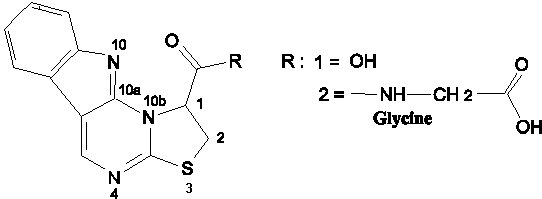
1Eidg. Forschungsanstalt, Schloss 334, Postfach 185, 8820 Wädenswil, Switzerland.
2Novartis Crop Protection AG, 4002 Basel, Switzerland.
The cabbage root fly, Delia radicum. L., recognises its host plants, different crucifers including cabbage (Brassica oleracea L.), by secondary plant compounds present on the leaf surface. All herbivores of crucifers studied so far, are attracted by isothiocyanates or stimulated by glucosinolates. The cabbage root fly is no exception, but we found that other substances than glucosinolates are much more important for this insect. We isolated and identified novel compounds present on the leaf surface, in the leaves, and in the roots that stimulate the oviposition. As bioassay we used electrophysiological recordings from a specific receptor neuron in the tarsal sensillum of the fly (sensitivity threshold » 4x10-11 M; Kb » 2x10-8 M). The major compound is 1,2-dihydro - 3-thia - 4,10,10b-triaza - cyclopenta[.a.]fluorene - 1-carboxylic acid with several related substances that we are in the process of identifying. The novel compounds have structural similarities to known phytoalexins that protect crucifers against microorganisms and stimulate oviposition in the cabbage root fly too.
